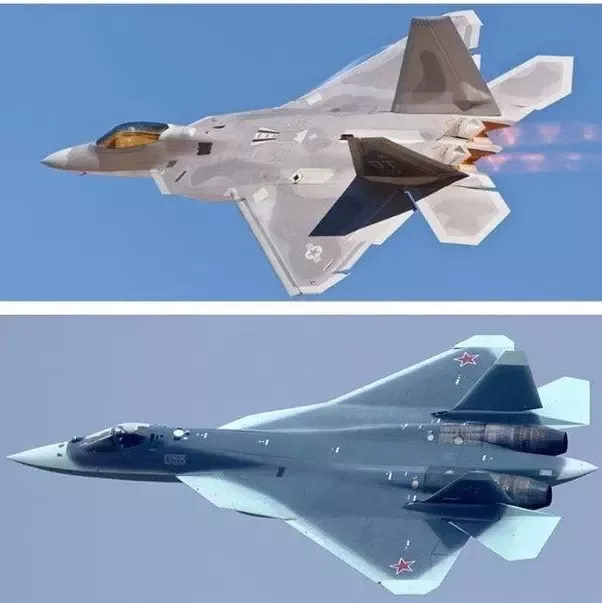6th Gen vs. 5th Gen Fighters: A New Era of Air Supremacy?
For decades, the roar of fighter jets has been synonymous with technological advancement and national power. As we move further into the 21st century, the skies are set to be dominated by a new breed of aircraft: 6th generation fighters. But what exactly sets them apart from their already impressive 5th generation predecessors? Let's dive into the cutting-edge world of aerial combat and explore the differences between these aerial titans.
Understanding the Generations
To appreciate the leap from 5th to 6th generation fighters, it’s helpful to understand what defines each generation. 5th generation fighters, like the F-35 Lightning II [20] and F-22 Raptor [11], represent the pinnacle of current operational technology [2]. Key characteristics include:
- Stealth: Designed with low-observable technology to minimize radar detection [2, 5].
- Supercruise: Ability to sustain supersonic flight without using afterburners [2, 5].
- Sensor Fusion: Integrating data from multiple sensors to provide pilots with unprecedented situational awareness [2, 3].
- Advanced Avionics: Featuring sophisticated electronic warfare capabilities, radar systems, and communication networks [2, 5].
These features allow 5th generation fighters to operate effectively in highly contested environments, offering a significant advantage over older, 4th generation aircraft [12].
Enter the 6th Generation: A Quantum Leap
While 5th generation fighters are incredibly advanced, the next generation promises to redefine air combat. Several countries are investing heavily in 6th generation programs, including the United States, China, and a collaborative effort between the UK, Italy, and Japan known as the Global Combat Air Programme (GCAP) [1, 17]. These programs aim to create aircraft that are not just incremental improvements, but represent a true paradigm shift in aerial warfare [6].
Here are some key areas where 6th generation fighters are expected to surpass their predecessors:
1. Enhanced Stealth and Survivability
Stealth remains a cornerstone of fighter design, but 6th generation aircraft will take it to the next level [6, 7]. This includes not only reducing radar cross-section but also minimizing infrared signatures and employing advanced electronic warfare systems to jam enemy sensors [6, 7, 12]. New designs may incorporate fluidic actuators and adaptive structures to dynamically decrease radar signatures [17].
2. Artificial Intelligence (AI) and Autonomy
AI will be integral to 6th generation fighters, transforming air combat by automating complex tasks and enhancing pilot decision-making [4, 17]. AI-driven systems will be able to analyze vast amounts of data in real-time, identify potential threats, and suggest optimal attack or evasive maneuvers [4, 13]. Furthermore, 6th generation fighters are expected to operate as optionally manned platforms, capable of flying autonomously or with a pilot [4].
3. "Loyal Wingman" Concept
A key feature of 6th generation warfare is the integration of unmanned aerial vehicles (UAVs) that will operate in coordination with manned fighters [4, 6, 7]. These "loyal wingmen" can perform a variety of roles, including reconnaissance, electronic warfare, and even combat missions, effectively multiplying the force and reducing risks to pilots [4, 6, 15].
4. Advanced Propulsion Systems
Sixth-generation fighters are expected to feature adaptive cycle engines, which can optimize efficiency at any speed or altitude, providing greater range, faster acceleration, and improved subsonic cruise [1, 7, 17]. Some designs may even incorporate hypersonic technology, enabling them to reach speeds exceeding Mach 5 [4, 9].
5. Network-Centric Warfare
These aircraft will be designed to seamlessly integrate with other assets in the battlespace, sharing data and coordinating attacks across multiple domains [16, 19]. This network-centric approach will provide a comprehensive view of the battlefield, enhancing situational awareness and enabling more effective decision-making [2, 13].
6. Hypersonic Weapons and Directed Energy Weapons
Sixth-generation fighters may be equipped with hypersonic missiles, which fly at speeds exceeding Mach 5, making them extremely difficult to intercept [4, 16]. They may also incorporate directed energy weapons, such as lasers, for missile defense and close-in combat [1, 4].
Insights and Analysis
The development of 6th generation fighters represents a significant shift in military aviation. The focus is moving beyond individual platform performance to a more integrated, system-of-systems approach [14, 19]. This requires not only advanced technology but also a new way of thinking about air combat.
Practical Tips and Considerations:
- Maintainability: Stealth technology needs to be more practical and reliable than previous generations [6].
- Cost: Balancing advanced capabilities with affordability will be a key challenge in developing and deploying 6th generation fighters [19].
- Training: Pilots and support personnel will need to be trained to operate and maintain these complex systems effectively [9, 10].
- Ethical Considerations: As AI and autonomy become more prevalent, ethical considerations surrounding the use of these technologies in warfare will need to be addressed [9, 15].
The Future of Air Combat
The transition from 5th to 6th generation fighters is not just about technological upgrades; it's about a fundamental shift in how air combat is conducted. The combination of enhanced stealth, AI-driven autonomy, loyal wingman concepts, and network-centric warfare will create a new era of air supremacy [15, 19]. While the first 6th generation fighters are expected to enter service in the 2030s [1], the groundwork is being laid today to ensure that the skies of tomorrow are dominated by these advanced and revolutionary aircraft.
Ready for Takeoff?
What do you think about the future of air combat? Share your thoughts in the comments below!

